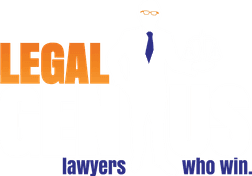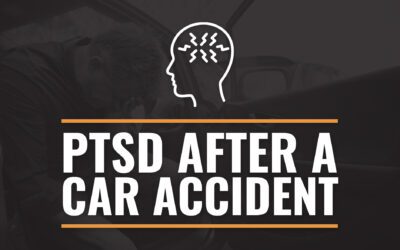
Table of Contents
You’re driving home from work, following your normal route through downtown Southfield on a rainy afternoon. As you approach an intersection, the light turns green, and you proceed through. Suddenly, another car barrels through a red light and collides with the back of your vehicle. You’re jolted violently and a dull ache begins to spread across your lower back. By the next morning, that mild discomfort has turned into severe pain, making it hard to move without wincing.
This experience is more common than you might realize, as back pain often follows car accidents. In this guide, we’ll explain potential causes, how to manage them, and how a Michigan car accident lawyer can help.
What Causes Back Injuries in Car Accidents?
When your car comes to a sudden stop, your body remains in motion until something halts it – usually a seat belt, airbag, or the vehicle itself. This sudden deceleration can wreak havoc on your spine, neck, and back. The impact may not immediately result in pain, but the forces exerted on your muscles, ligaments, and bones can lead to a range of back injuries.
Even in minor collisions, your spine can suffer damage. The violent movement can sprain or strain soft tissues or result in fractures. While injuries are often more obvious in high-impact accidents like head-on or rear-end collisions, even low-speed crashes can lead to significant back pain and discomfort.
Areas of the Spine Affected by Car Accidents
The spine is divided into three main sections, all of which are vulnerable during a crash.
Cervical Spine (Neck)
The cervical spine includes the first seven vertebrae at the top of your spine, from the base of the skull to the top of your shoulders. It is highly flexible, which makes it prone to injuries such as whiplash. The sudden forward and backward movement in a car crash can damage ligaments, muscles, and discs, causing pain that radiates down through the shoulders and arms.
Thoracic Spine (Upper Back)
The thoracic spine consists of 12 vertebrae connected to your ribcage. Although this part of the spine is more rigid and less likely to be injured in car accidents, the injuries tend to be severe when it is affected. Damage to the thoracic spine can lead to chronic pain, breathing difficulties, and even nerve complications.
Lumbar Spine (Lower Back)
The lower back is one of the most commonly injured areas in car accidents. The lumbar spine includes five large vertebrae that support much of your body’s weight, so injuries to this area, including strains, sprains, and herniated discs, can cause significant discomfort and impair mobility. In fact, damage to the soft discs in the lumbar region is a frequent cause of back pain after an accident.
With 33 vertebrae, 31 pairs of nerve roots, and 32 muscles in your neck and back, even minor damage to one area can have long-lasting effects. Most injuries involve the lower back, where the lumbar vertebrae are located, but any part of the spine can be affected.
Common Symptoms of a Back Injury After a Car Accident
After a car accident, it’s normal to feel sore all over, which can make it difficult to pinpoint the source of your discomfort. Back injuries can manifest in a variety of ways, and understanding the symptoms can help you identify when to seek medical help.
Here are some common symptoms to look out for:
- Muscle Spasms: Muscle spasms can vary in intensity from a mild, throbbing sensation to severe pain that feels like your muscles are locked in a knot. These spasms may limit your movement and persist for days or weeks, depending on the severity of the injury.
- Burning Sensations: If your nerves are affected by a car accident, you may feel a burning or tingling pain radiating from your lower back to your buttocks, and sometimes even down one or both legs. This sensation, often caused by nerve compression, can range from mild discomfort to a sharp, shooting pain that makes it difficult to perform everyday activities.
- Stiffness: After an accident, your body often reacts to trauma by tightening muscles to protect the injured area. This stiffness can make it hard to move freely or bend your back, making simple tasks like standing up, walking, or sitting for long periods uncomfortable. The stiffness might ease with light stretching, but if it persists, consult a doctor.
- Sharp, Acute Pain: After an accident, changing positions (such as moving from sitting to standing) can sometimes cause sharp, stabbing pain in your back. This type of acute pain often indicates a deeper issue, like a herniated disc or spinal fracture, and should not be ignored.
- Difficulty Walking or Standing: Some back injuries make even simple movements like walking or standing feel unbearable. If you experience a throbbing or persistent pain when trying to be active, it could be a sign that your spine or its surrounding structures are injured.
- Numbness or Tingling: Back injuries that involve the spinal cord or surrounding nerves can cause tingling or numbness in your legs, arms, or feet. This is because the nerves in your spine connect to your extremities, and damage to these nerves can disrupt normal sensations. This symptom may indicate a more serious injury, such as nerve impingement or a herniated disc.
- Headaches, Dizziness, or Neck Pain: Injuries to the cervical spine can cause headaches or dizziness due to whiplash. This type of injury, which affects the upper vertebrae in your neck, can lead to symptoms that extend beyond your back, including pain in your shoulders and upper arms.
The duration of back pain following a car accident can vary significantly depending on the nature of the injury, the individual’s prior health, and how quickly treatment is administered. In some cases, back pain may resolve within days or weeks, while in more severe cases, it can persist for months or even years.
Common Types of Back Injuries From a Car Accident
Car accidents can lead to a range of back injuries, and identifying the specific type of injury you sustained is key to determining the best treatment plan. Below are some of the most common back injuries resulting from motor vehicle collisions.
Fractures in the Lumbar or Thoracic Vertebrae
A vertebral fracture occurs when one or more of the bones in your spine are damaged. Fractures in the lumbar (lower back) or thoracic (upper back) regions are particularly painful and can lead to long-term issues if not treated properly. Examples include:
- Burst Fracture: This type of spinal injury occurs when multiple parts of a vertebra are crushed, causing bone fragments to scatter. These fragments can press on the spinal cord, leading to severe complications.
- Compression Fracture: A compression fracture involves small cracks or breaks in the vertebrae. These fractures are common in high-impact accidents and can result in significant back pain.
- Fracture-Dislocation: This injury combines a spinal fracture with dislocation, where the vertebra moves out of place. It’s a serious condition that requires immediate medical intervention to prevent permanent damage.
Sprains and Strains
A sprain involves the overstretching or tearing of ligaments while a strain refers to damage to the muscles or tendons. These soft tissue injuries are common in car accidents and can cause a lot of discomfort, even though they may not appear on diagnostic imaging. While sprains and strains are often less serious than fractures, they can still take weeks or months to heal completely.
Herniated Discs
A herniated disc occurs when the inner portion of a spinal disc pushes through the outer ring, often due to the impact of a car accident. This condition can cause the disc to press on nearby nerves, leading to pain, numbness, and weakness. Herniated discs are often referred to as “slipped” or “ruptured” discs, and they are one of the more severe causes of back pain after an accident.
Spondylolisthesis
This condition occurs when a vertebra slips out of place due to a stress fracture. The displaced vertebra can compress the spinal canal or nerves, causing pain, numbness, and difficulty walking. Spondylolisthesis can be mild or severe, depending on the degree of displacement and the location of the injury.
Facet Joint Injuries
The facet joints connect the vertebrae in your spine, allowing for flexibility and movement. These joints are vulnerable to injury during a car accident, particularly if the impact causes twisting or bending motions. Damage to the facet joints can lead to inflammation and pain, especially when moving or standing for long periods.
Discogenic Pain
Discogenic pain originates from the discs in the spine, often as a result of trauma from an accident. This type of pain is typically sharp and may radiate down through the legs, as seen in conditions like sciatica. Discogenic pain can make it difficult to perform basic activities, such as standing or sitting for extended periods.
Degenerative Spinal Disorders
In some cases, a car accident can accelerate pre-existing conditions like degenerative disc disease. Trauma to the spine can cause the wear and tear on the discs to progress more rapidly, leading to pain and mobility issues down the road. Other degenerative conditions that may worsen after an accident include spinal stenosis, spondylolisthesis, and osteoarthritis.
How to Treat Back Pain After a Car Accident
If you’re experiencing back pain following an auto accident, it’s important to take steps toward managing your pain and promoting healing. Below is an overview of a few strategies and treatments that support your recovery.
- Rest and Limited Activity: Giving your back time to heal is crucial. Avoid strenuous activities, such as lifting heavy objects or twisting your back, for a few weeks after the accident. However, don’t stay immobile for too long, as some light movement and stretching can help prevent stiffness.
- Ice and Heat Therapy: Applying ice to the affected area for the first few days can help reduce inflammation. After the initial swelling has gone down, you can alternate with heat therapy to relax tight muscles and increase blood flow to the injured area.
- Physical Therapy: Working with a physical therapist can help you regain strength and flexibility in your back. A therapist will guide you through exercises designed to reduce pain, improve posture, and prevent further injury.
- Over-the-Counter Medications: Anti-inflammatory medications like ibuprofen can help reduce pain and swelling. If over-the-counter options don’t provide relief, your doctor may prescribe stronger medications or muscle relaxants.
- Chiropractic Care: Chiropractors specialize in adjusting the spine and may help realign your vertebrae if they were affected by the accident. Chiropractic care can also relieve pressure on nerves and improve mobility.
- Epidural Steroid Injections: If the pain is caused by inflammation around a nerve, an epidural steroid injection may provide relief. This treatment delivers a powerful anti-inflammatory medication directly to the source of the pain, offering temporary but effective relief.
Get a Free Consultation From a Car Accident Lawyer
Back pain from a car accident can lead to long-term health problems and financial difficulties, particularly when medical bills and lost wages start to accumulate. If someone else’s negligence caused the accident, you have the right to seek compensation for your injuries. A personal injury lawyer can help you pursue damages for medical expenses, lost income, pain and suffering, and future treatment needs.
At LegalGenius, we have years of experience helping clients who have been injured in car accidents. Our skilled team of personal injury lawyers will work to identify the at-fault party or parties, assign a value to your claim, collect evidence (like police reports), and aggressively pursue the compensation you deserve while you focus on your recovery. To schedule your free consultation and case review, fill out our Ask the Genius™ form or call (800) 209-4000 today.

Attorney Jeffrey Perlman
Attorney Jeffrey Perlamn is the managing partner at LegalGenius, PLLC. He has helped Metro Detroit accident victims recover the compensation they deserve for over 35 years. He believes everyone should have access to justice and the legal system, which is why Attorney Perlman spends his time outside of the courtroom writing informational blogs on the LegalGenius website that are accessible to all.


